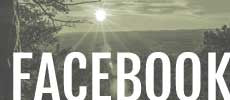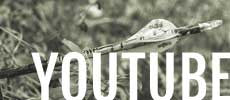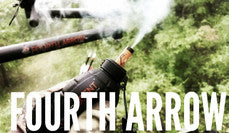Subtle hints of red now grace the leaves of a sturdy maple that held my weight on opening day here in Wisconsin. Much of the green has since left the soybeans and the deer are off to seek other food options to avoid the bitter taste of a yellow bean that hasn’t fully ripened. Other food sources are abound as acorns continue to fall like rain in a canopy of mighty oaks, and corn fields are finally maturing to the taste deer crave this time of year. A farmer down the road cuts his hay for a third and final time of the season so I drive by slowly, windows down, and inhale deeply as I pass. Nothing smells more country to me than the scent of fresh cut hay on a damp cool night. Fall is here, it’s what we’ve been waiting for and reports of tags getting filled are being heard across the Midwest.
With every season that passes, stories are created, lessons are learned, and the long wait begins for the next season to arrive. Two of the last three seasons I’ve managed to wrap my tag around the antler of a good buck within the first week or two of the season opener, but I was fortunate to be permitted to continue hunting for another buck for the remainder of the archery season.
In prior years, Wisconsin’s deer hunting regulations were broken down into alpha-numeric “units”. Much of southern Wisconsin was sanctioned as Chronic Wasting Disease (CWD) units, thus the State permitted hunters to harvest multiple bucks per season so long as the hunter satisfied the prerequisite of harvesting a doe in those CWD units in exchange for a “Bonus Buck” sticker applicable only in those CWD units. Those stickers were valid to be applied towards the archery and firearm whitetail season for the remainder of the current season, as well as extended for the duration of the following season. So if a hunter received a bonus buck sticker in 2012 and never used it, they could then apply it towards an additional buck beyond the regular buck tag they receive the following year in 2013.
Last year Wisconsin changed the structure of whitetail hunting areas from “units” to “zones”. The zones were much more robust than the pre-existing units in that they enveloped much larger areas, and the CWD areas were eliminated from the state. Bonus buck stickers earned the previous year (2013) within a CWD unit were still valid if applied in what had become the “Southern Farmland Zone”, which extended further north into areas that had previously not been legal to harvest an additional buck. The State also ceased opportunities to earn additional bonus buck stickers in 2014 as this exception to the States regulations was eliminated in 2015.
This season would be different - I knew that going into it. If I was going to send airmail in the direction of a buck early on, it would have to be well worth it as I would be limited to doe hunts and filming the remainder of the archery season well before the action starts heating up around the end of October.
After only six hang-and-hunt sits this year in southeast Wisconsin, I was again rewarded with an opportunity to wrap my tag around another worthy bucks antler. The buck I was targeting on this particular piece was a heavy 10-pointer with good tine length and a huge body. I captured several minutes of video of him as he browsed along the edge of the still-green soybeans rimmed with thick dogwood while I sat helpless in my stand with no shot despite him working inside of 40-yards. 

The next day I tip-toed 70-yards further down the field edge to a small sapling situated along the field edge. The little tree was surrounded by buckthorn and dogwood, but with no other option, I wasted no time getting set up. I managed to hang three climbing sticks to reach high enough to situate my Lone Wolf treestand where I would have a vantage point. My mind was made up, if that great buck I’d seen the night before followed the same route tonight, I would draw back and not think twice. 
The evening was a bust. I saw two does from a distance and darkness settled in as the coyotes let their presence be known with yips and howls piercing the otherwise silent night.
My wife, Christie, and I are expecting our first child near the end of January and being the motivating supportive wife she truly is, she recommended I sit that set one last time before pulling it and attacking from another angle.
With the wind in my favor, I set out one last time along the downwind field edge and crept my way towards that little sapling. A large ash tree along the field edge had fallen during a big storm earlier in the summer and extended into the beans. The down tree is an obstacle I must go around in order to continue down the field edge and creates a blinding shield preventing me from easily seeing what may be standing on the other side of it. As I rounded the fallen tree to continue on, I was stopped dead in my tracks and found myself in a stare down with a large doe standing just 50-yards down the field edge. She was early, or I was late, either way, there we were.
The doe eventually looked the other way for a moment and I dropped down beneath the cover of the beans. I fumbled to get the camera rolling and eventually filmed her. Curiosity nearly got the best of her as she cautiously worked my way. You’ll see in the footage as she closes in on 45-yards and I whisper a fair warning, “She gets much closer I’m going to shoot her…” Eventually she wises up and turns into the thicket before I could draw back, but the experience was neat to encounter.
Once in the stand, I settled down and the wait began. For a moment I thought about the days ahead and how long my wife would really put up with the time I was ready to invest into climbing trees and waiting on the big buck I promised her. I thought about the dessert she was baking at home and how good it must smell in my house. My stomach rumbled – the tiny tree shook.
A doe emerged from the dogwood thicket immediately to my right and cautiously stepped into the bean field to feed. I considered shooting her, but before I could make my decision the doe snapped her head up and cut a hard stare across the bean field in the very direction I expected the buck to step out of.
Sure enough, there was a buck. I zoomed in on him with my camera to get a better look and recognized he wasn’t nearly as big as what I was after, but in a few moments he stepped into the open revealing his piebald coat. I followed him with the camera as he approached my stand inside of 20-yards. The range of emotion that came over me is hard to explain. I suppose it was a mixture of feelings, really. He was much younger and the rack much smaller than what I typically would consider shooting, especially this early in the season, but the piebald cape was distinguishing, unique, and truly rare – what a trophy.
Unlike seasons of old, I could only tag one buck with my bow this year and I knew the wait would be a long one until next season if it all unfolded now.
I filmed him graze for some time before persuading myself to accept this once in a lifetime rare opportunity and not only harvest a piebald buck, but do it all on film. In an instant I was drawn back and released my arrow. The impact of the hit sent the buck high into a bronco kick before setting off back in the direction he had come. I followed him with the camera as he disappeared back into the dogwood thicket and found him after a short track job with a friend of mine who thankfully helped me drag him out of the cattails he died in, as well.

It is the beginning of the most beautiful and comfortable times of the year, don’t waste a minute of it!











